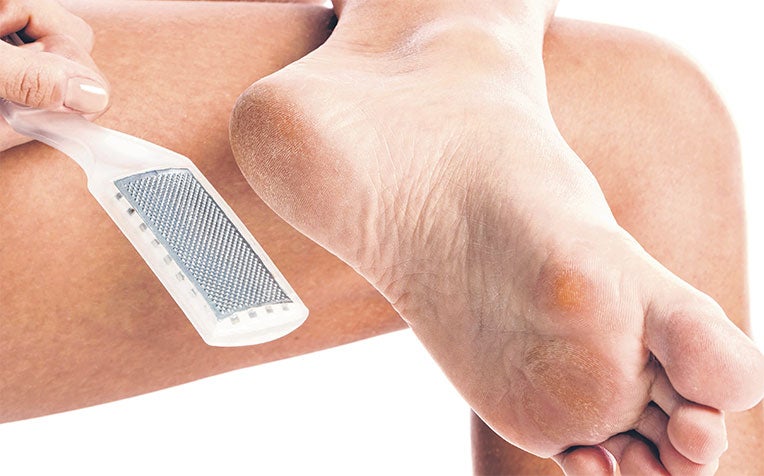
is the safer way to remove thickened skin. But do not file too aggressively and, if unsure, seek help from a podiatrist.
Original title: Ways to manage corns and calluses
Calluses and corns, which are very common skin conditions that appear mainly on the feet, result from abnormal pressure and friction.
Calluses are thick, yellowish and toughened skin that develops when the body tries to protect the healthy inner layers of the skin.
Corns are circular bumps of thickened, hardened skin with an inverted cone-shaped core. It is this thickened core that can press on the healthy tissues and cause pain.
When the pain is intense, a person ends up limping or walking in an unnatural way, says Mr Daniel Wong, a podiatrist at the Singapore General Hospital.
Mr Wong offers some tips on how to manage your calluses and corns:
1. Wear shoes that offer adequate cushioning
Calluses and corns can be caused by ill-fitting footwear.
Thus, your footwear should be covered and fitted correctly to your foot size in terms of length and width.
Additionally, it should have a strap or laces to help secure your foot. Such footwear will help to reduce pressure on the foot and slow the rate of callus formation.
Always wear socks with shoes to protect your feet from any abrasions and for good hygiene.
2. Do not cut the corn or callus
Using a pair of scissors or nail clippers to trim your calluses may result in wounds and infection.
Instead, use a callus file to safely and gently file away the thick skin. This should be done according to how fast your callus builds up. Typically, you can do so once a week.
If your callus builds up faster, you may increase the frequency of management. Do not file too aggressively and, if unsure, seek help from a podiatrist.
Podiatrists can safely remove your calluses and corns, which will help alleviate most of the pain immediately. They can also recommend you the right foot products to use, as well as educate you on how to self-manage your foot problems at home.
3. Use moisturiser
Apply some moisturiser to the callused areas to hydrate the skin and keep it healthy.
Be careful to avoid the spaces in between your toes to prevent fungal infections.
4. Use padding
Silicone gel paddings that can be bought off the shelf can provide pressure relief and cushioning.
Remember to check your footwear for adequate width and depth as these paddings may reduce the space in your shoe.
5. And, if you are diabetic...
You should take special care due to the possible reduced sensation to temperature and pain.
Hence, avoid soaking your feet in medicines, self-remedies or water of extreme temperatures.
“Some of these solutions may be too hot – which may lead to scalding – while some may be caustic in nature, causing damage to healthy tissue,” says Mr Wong.
You may not notice or feel the pain from corns or calluses, putting you at a higher risk of developing complications from these growths. “Further pressure, friction and microtrauma without appropriate treatment can lead to the breakdown of the underlying healthy tissue and eventual ulceration,” he warns.
Contributed by














 Get it on Google Play
Get it on Google Play